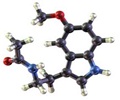US researchers have, for the first time, provided a detailed look at the molecular pathways underlying sleep apnea, which may lead to new treatments for the condition.
US researchers have, for the first time, provided a detailed look at the molecular pathways underlying sleep apnea, which may lead to new treatments for the condition.
Sleep apnea is characterized by temporary breathing interruptions during sleep, in which disruptions can occur dozens or even hundreds of times a night.The research team found that in an animal model of sleep apnea, poorly folded proteins accumulate in one compartment of a muscle nerve cell, which, under certain conditions, tells a cell to heal itself or destroy itself.
“Muscles relax as a normal part of sleep, causing the airway to close,” said senior author Sigrid C. Veasey, MD, Associate Professor of Medicine, at the Penn Center for Sleep.
“But in patients with sleep apnea, oxygen levels in cells drop too low, sending an arousal signal to wake by gasping for air. This happens all night long, so patients experience bad quality sleep. In addition to problems with sleepiness, subtle peripheral neural injury occurs,” Veasey added.
In a mouse model of sleep apnea, the researchers found that motor neurons of the jaw and face had swollen endoplasmic reticula, the part of the cell where proteins get folded properly.
They surmised that misfolded proteins accumulated as the endoplasmic reticula of mice were exposed to decreased oxygen and oxygen fluctuations during sleep over eight weeks. The involvement of the endoplasmic reticula has never been shown before in explaining the physiology of sleep apnea on a cellular level, says Veasey.
Advertisement
The research team worked with one of those proteins, called PERK. When PERK gets activated, two things can happen: The cell can take a pathway to fix itself or one that leads to self destruction. The cell makes that decision based on its initial health.
Advertisement
However if cells are unhealthy to begin with, the PERK pathway can also turn on molecules that cause the cell to turn on itself and activate apoptosis or cell death.
“In this event, we predict that patients with sleep apnea may lose motor neurons. Eventually sleep apnea could continue to worsen since the few remaining neurons are already stressed when gasping for air during sleep,” added Veasey.
The study is published in the Journal of Neuroscience.
Source-ANI
SRM/L











